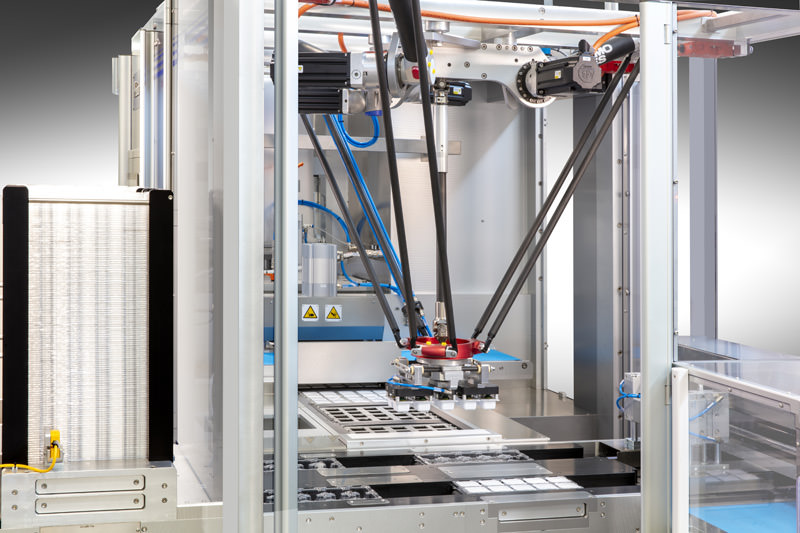
The machine on which we most often integrate robotic technology is our Prima K7 automatic thermoforming machine , an excellent solution used for the production of PET, PVC and polystyrene trays for the packaging of syringes, vials and bottles. In a recent application we have integrated about ten robots. But Prima K7 is a transversal machine that is also used in other industries, such as food where it is widely used for the packaging of single-dose food.
But how to choose the robot?
Choosing and customizing the robot or multiple robots in the same application is not an easy task. The starting point is undoubtedly to understand with the utmost precision what the robot will have to do. It seems trivial but it is not. On a conceptual level, the task of the robot is almost always clear but when one enters into the operational detail the variables to be quantified create many complexities. The main variables to be defined when choosing the robot can be:
cyclic requests which, often, are not a unique value but a set of variable values according to the format
wrist loads, including grippers and their centers of mass
withdrawal and deposit points
grabbing, transferring and releasing strategies (trajectories)
areas of interference
Defining these variables is however the task of our Farmo Res technicians who, through ad hoc questionnaires, will receive from the customer the necessary details for the choice, installation and customization of the robot. In our opinion, it is highly inadvisable to rely on suppliers who propose robotic mechanics solutions based on generic data because, over time, you would face an inevitable series of problems.
The characteristics of the robots we install
Independence from the controller and the possibility of total integration, combined with reliability and performance efficiency, are the main prerogatives. But the most important aspect is to be able to make use of a mechanics capable of carrying out its action using the same electronics as the machine, therefore without the need to integrate a different control unit and control interface. Our robots are thus an integral part of the machine. The range of solutions that we can integrate is really wide, being able to range from over 200 models divided between robots from 3 to 5 axes, duopods, anthropomorphs, versions in hygienic design and other special versions, all independent from the controller and able to work in any packaging stage.







